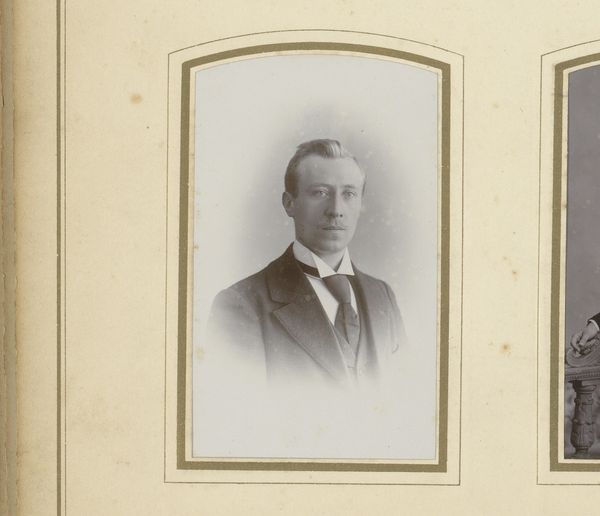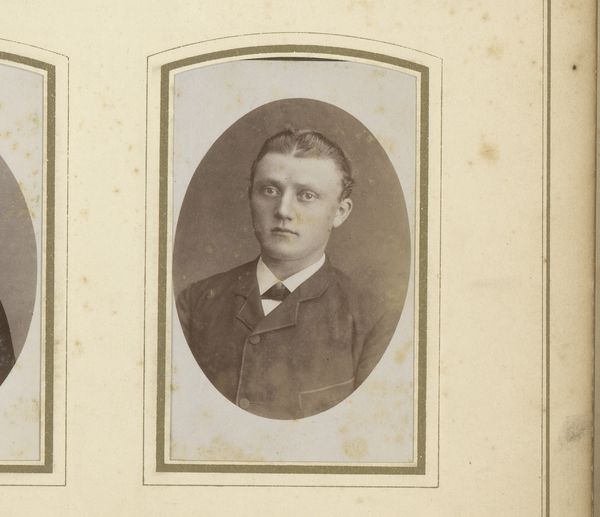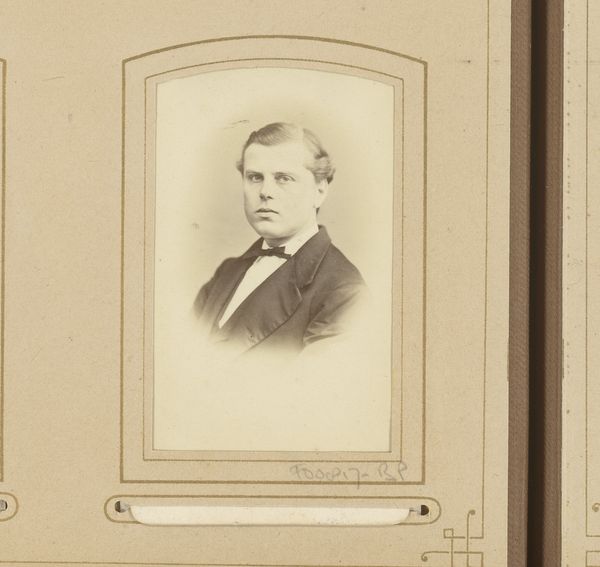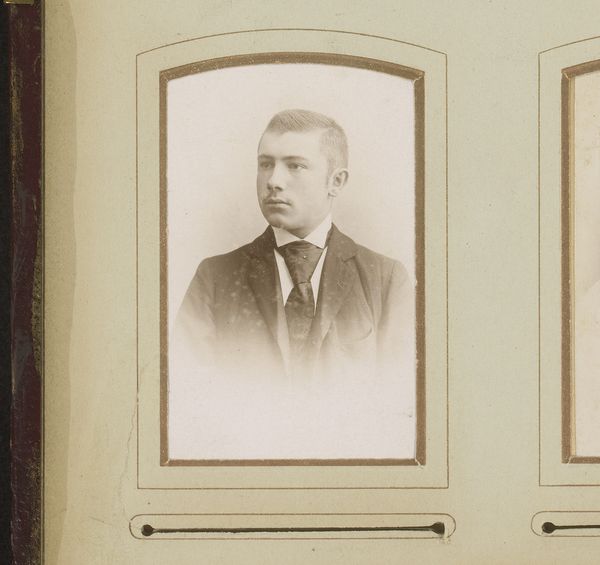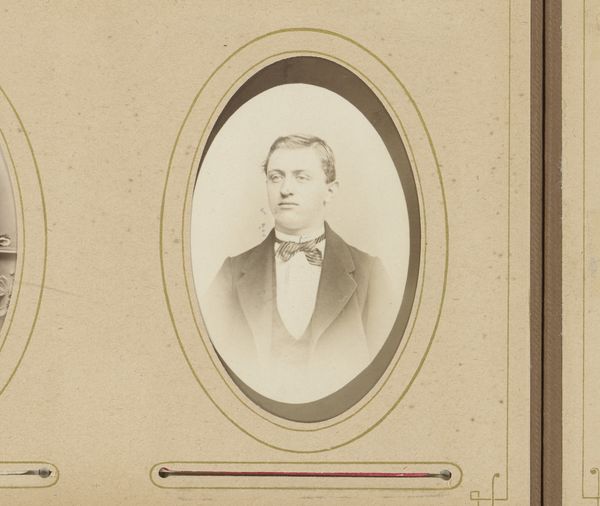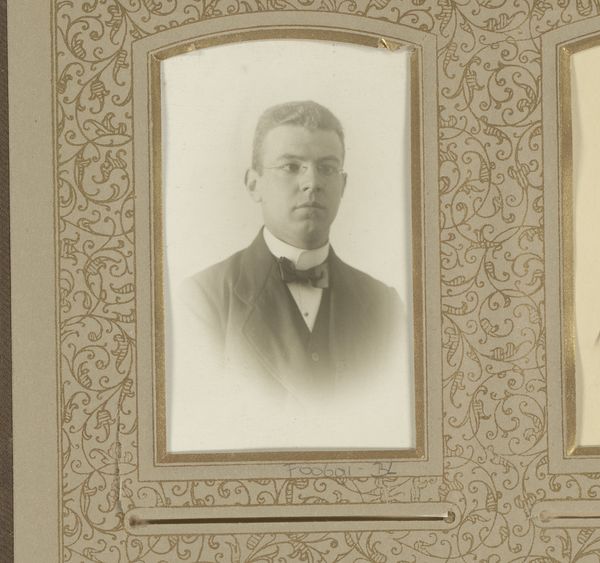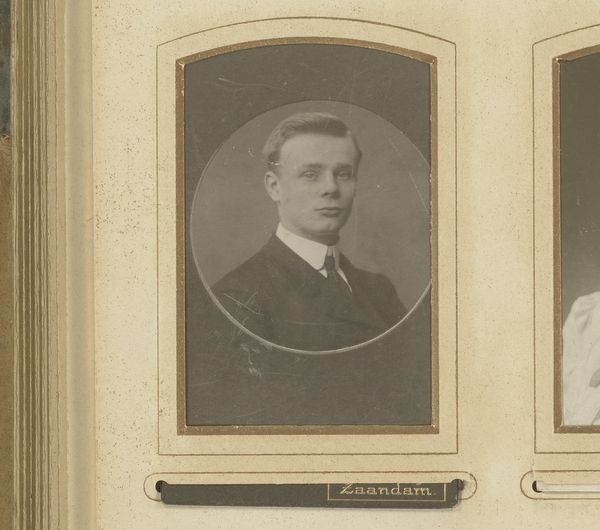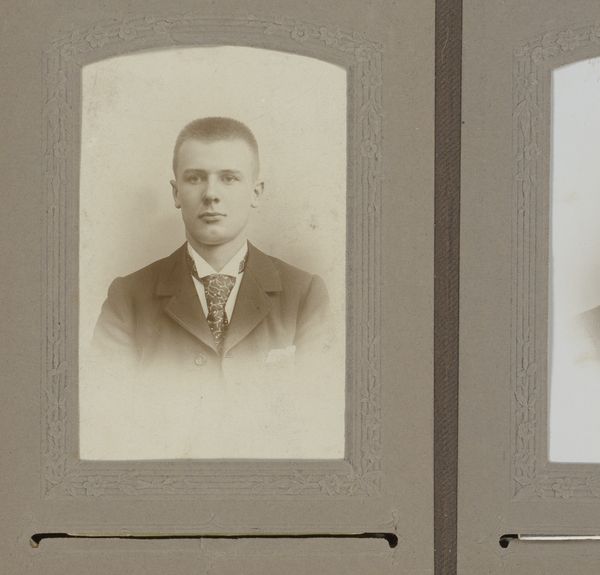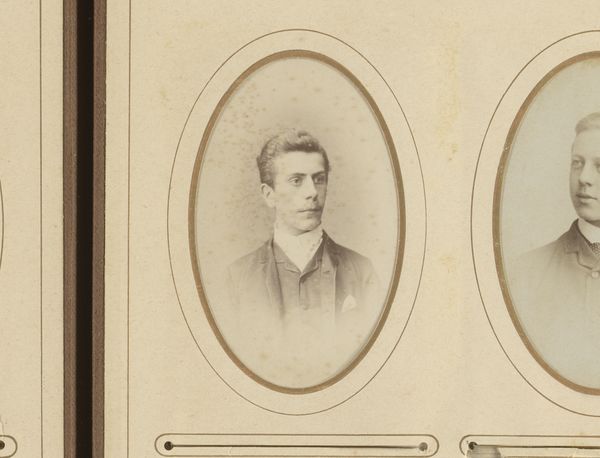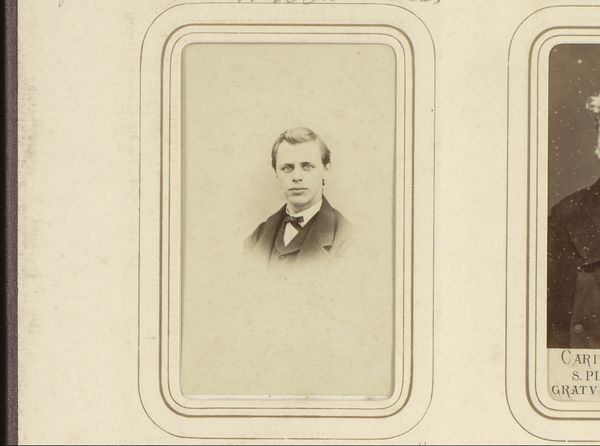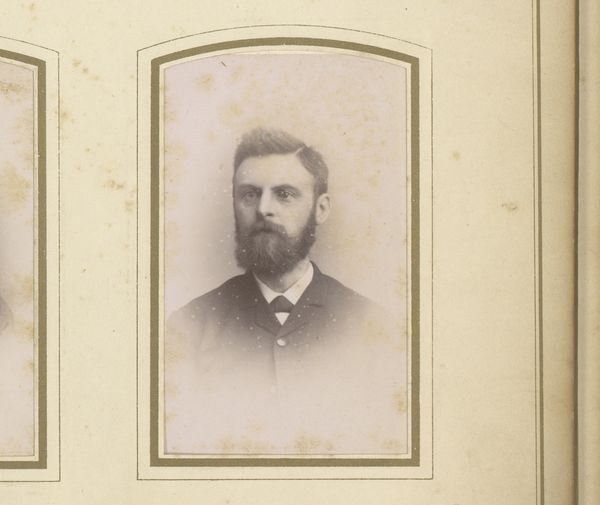
photography
#
portrait
#
photography
#
genre-painting
Dimensions: height 80 mm, width 50 mm
Copyright: Rijks Museum: Open Domain
Curator: This is "Portret van een jongeman," or "Portrait of a Young Man," a photograph taken sometime between 1880 and 1920. The piece is held here at the Rijksmuseum, attributed to the ambiguous figure of Atelier Rembrandt. Editor: There's something strikingly innocent about the image. The faded sepia tones lend it a dreamlike quality, and the sharp focus on his face against the soft, blurry background emphasizes a sense of both vulnerability and directness. Curator: Consider the era, though. Posed photography like this, especially for young men, was often a calculated performance of social mobility. The bow tie, the tailored jacket—these weren’t everyday garments. The studio, claiming Rembrandt's name, signals its artistic aspiration. What narratives are being built or obscured here? Editor: I agree, context is vital. However, isolating elements reveals visual intentions, the subject presented inside decorative border—it has sharp edges contrasting against a very uniform, hazy area where his clothing meets the negative space. The interplay makes the overall construction very fascinating. Curator: It's important to unpack that decorative border itself. Its placement within what appears to be a photo album reminds us this image was not necessarily meant for public consumption. It may speak to aspirations—perhaps of class, intellect, or even artistic identity—circulating within specific social circles of that era. Is there any sign of identity politics to read into that can signal which segment of the broader population he identified as being from? Editor: But notice how even within those constraints, the photographer uses tonal range, and focused contrast, to invite viewers deeper than that superficial performance of the album sitting or the decorational surrounding! To only evaluate the artwork in relation to politics limits visual meaning or power to connect across boundaries. Curator: And to disregard those politics limits understanding. Who gets to control representation? Which stories get preserved? The very existence of this image within the Rijksmuseum makes that question more important, not less! The photograph is both image and social document. Editor: It seems to exist both as personal memento, and artistic expression, not bound so completely by politics. It reminds of many contemporary semiotic pieces in its own unique right by contrasting positive-space subjects framed via border. The soft tones allow for nuanced focus points throughout giving potential for interpretations depending on the viewer’s vantage point. Curator: Thank you. That dialectic really demonstrates that multiple voices must join in meaning-making for art of this type. Editor: Exactly! It becomes more dynamic for consideration now.
Comments
No comments
Be the first to comment and join the conversation on the ultimate creative platform.
